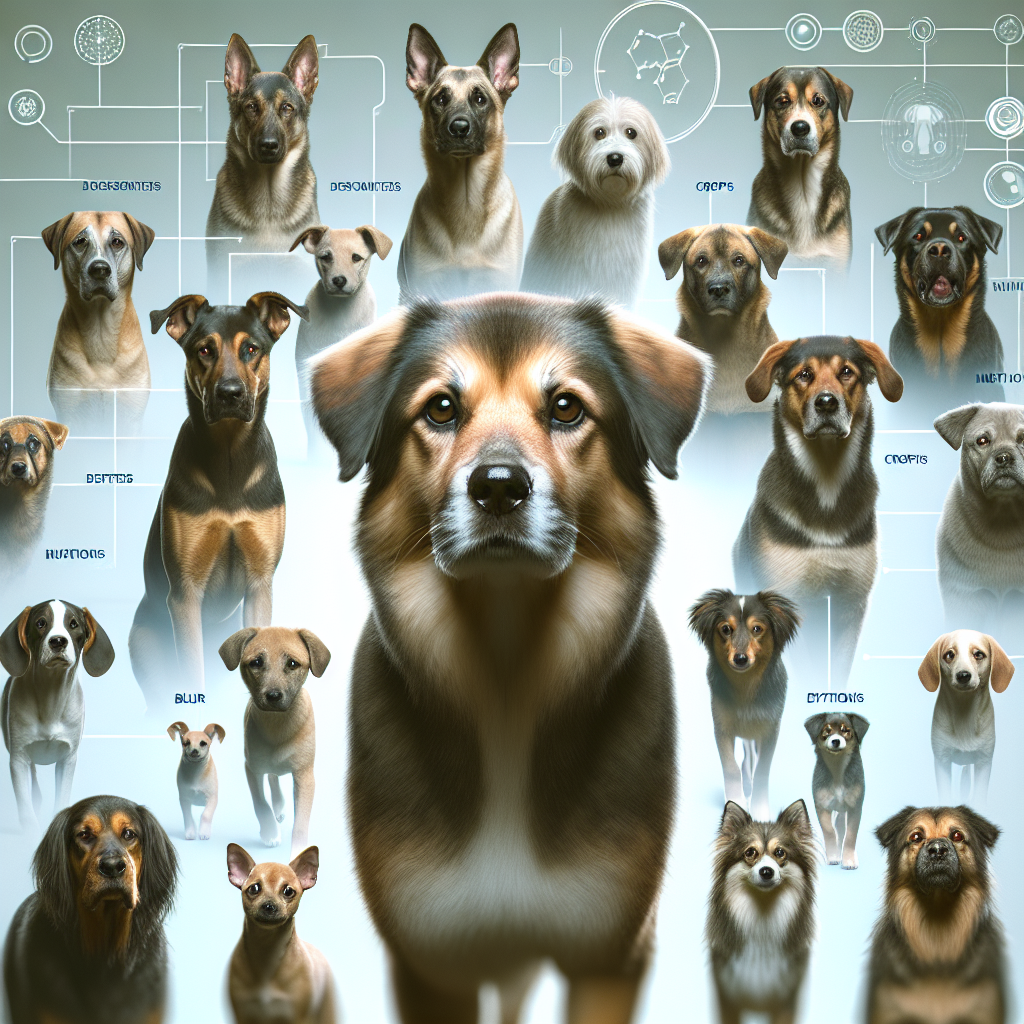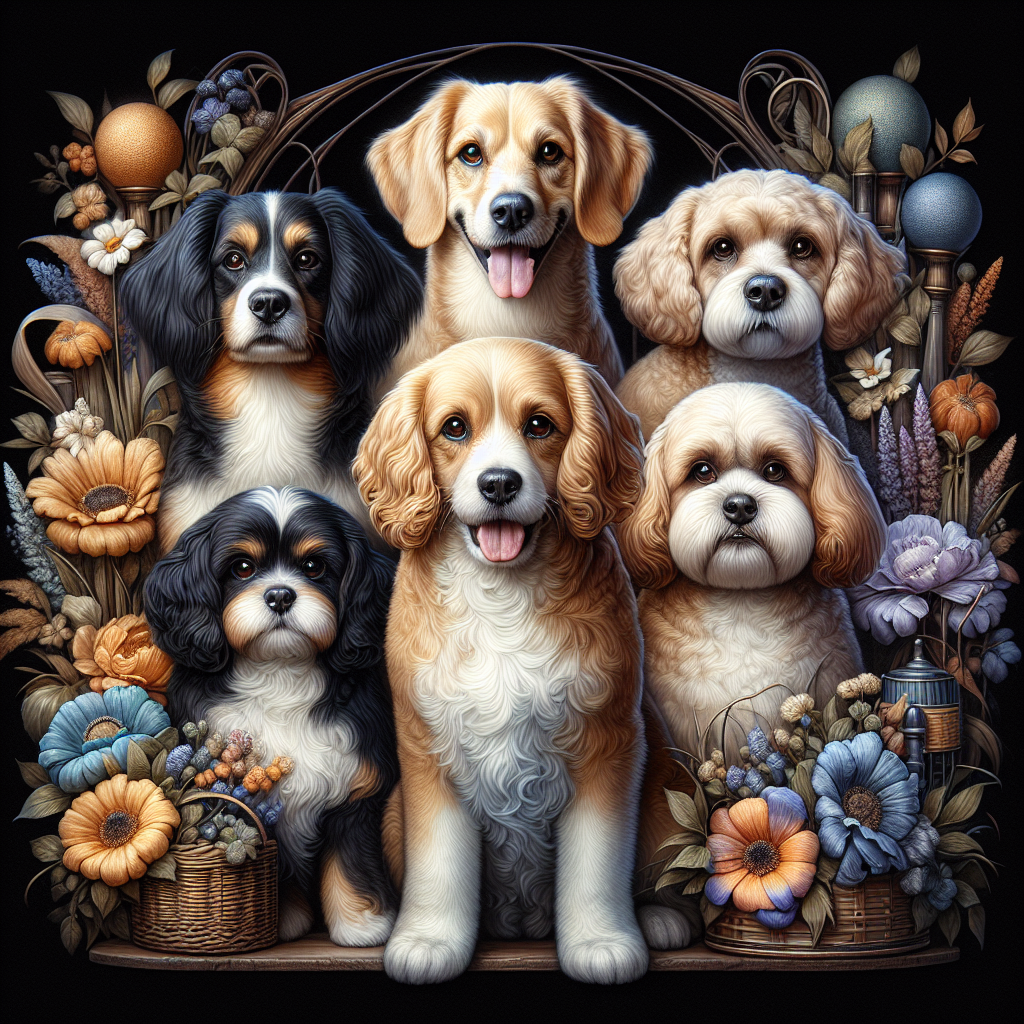The Crossbreed Revolution: How Designer Dogs Are Changing Pet Culture
- pajila6726
- Sep 13, 2024
- 3 min read
In the world of canine companions, a new trend has been emerging – designer dogs. These delightful crossbreeds are capturing the hearts of many, offering a unique blend of traits from different purebred parents. In this blog post, we will delve into the fascinating world of designer dogs, explore their rise in popularity, and provide you with essential information on what you need to know if you're considering bringing one of these precious pups into your life.
The Fascination with Designer Dogs
Designer dogs, also known as hybrid dogs, are the result of mating two different purebred parents. This crossbreeding creates offspring that inherit a combination of characteristics from each parent breed, resulting in a one-of-a-kind furry friend. The appeal of designer dogs lies in their unique appearances, diverse personalities, and often hypoallergenic qualities.

The Rise in Popularity
Over the past few decades, designer dogs have soared in popularity. From the playful Labradoodle (Labrador Retriever x Poodle) to the affectionate Goldendoodle (Golden Retriever x Poodle), these crossbreeds have captured the attention of dog lovers worldwide. Their endearing traits, combined with their potential for being more allergy-friendly than some purebred dogs, have contributed to their rapid rise in demand.
Understanding Designer Dog Breeds
Designer dogs come in a wide variety of breeds, each with its own unique characteristics. Some popular designer breeds include the Pomsky (Pomeranian x Husky), Cockapoo (Cocker Spaniel x Poodle), and Cavachon (Cavalier King Charles Spaniel x Bichon Frise). It's essential to research and understand the specific needs and temperaments of the parent breeds before bringing a designer dog into your home.
What You Need to Know
Before welcoming a designer dog into your family, there are several key factors to consider. Firstly, it's vital to remember that designer dogs are a blend of two breeds, which means their traits can vary widely. While some designer dogs may inherit the best qualities of both parents, others may exhibit a mix of characteristics that require careful training and socialization.

Health considerations are also crucial when it comes to designer dogs. Some crossbreeds may be prone to certain health issues that are common in their parent breeds. Regular veterinary check-ups and a balanced diet are essential for ensuring your designer dog leads a healthy and happy life.
Furthermore, training and socialization are key components of raising a well-behaved designer dog. Each breed combination may require a unique approach to training, so investing time and effort in positive reinforcement techniques can help your furry companion become a well-adjusted member of your family.
Final Thoughts
Designer dogs have brought a new dimension to the world of canine companionship, offering a delightful mix of traits and personalities that appeal to dog lovers of all kinds. As the popularity of these crossbreeds continues to grow, it's essential to understand the responsibilities that come with caring for a designer dog and to ensure that they receive the love, attention, and care they need to thrive.
Whether you're enchanted by the playful antics of a Labradoodle or the elegant charm of a Cavachon, choosing a designer dog can be a rewarding experience that brings joy and companionship into your life. By considering the unique needs of each breed combination and providing a loving home, you can embark on a wonderful journey with your designer dog by your side.
Remember, every designer dog is a special blend of love and loyalty, waiting to become an integral part of your family and brighten your days with their boundless affection.
So, are you ready to welcome a designer dog into your home and experience the extraordinary bond that comes with these lovable crossbreeds?
Let the tail-wagging adventures begin!
SEO Keywords: Designer Dogs, Crossbreeds, Hybrid Dogs, Popular Designer Breeds, Canine Companions, Health Considerations, Training and Socialization.

Comments